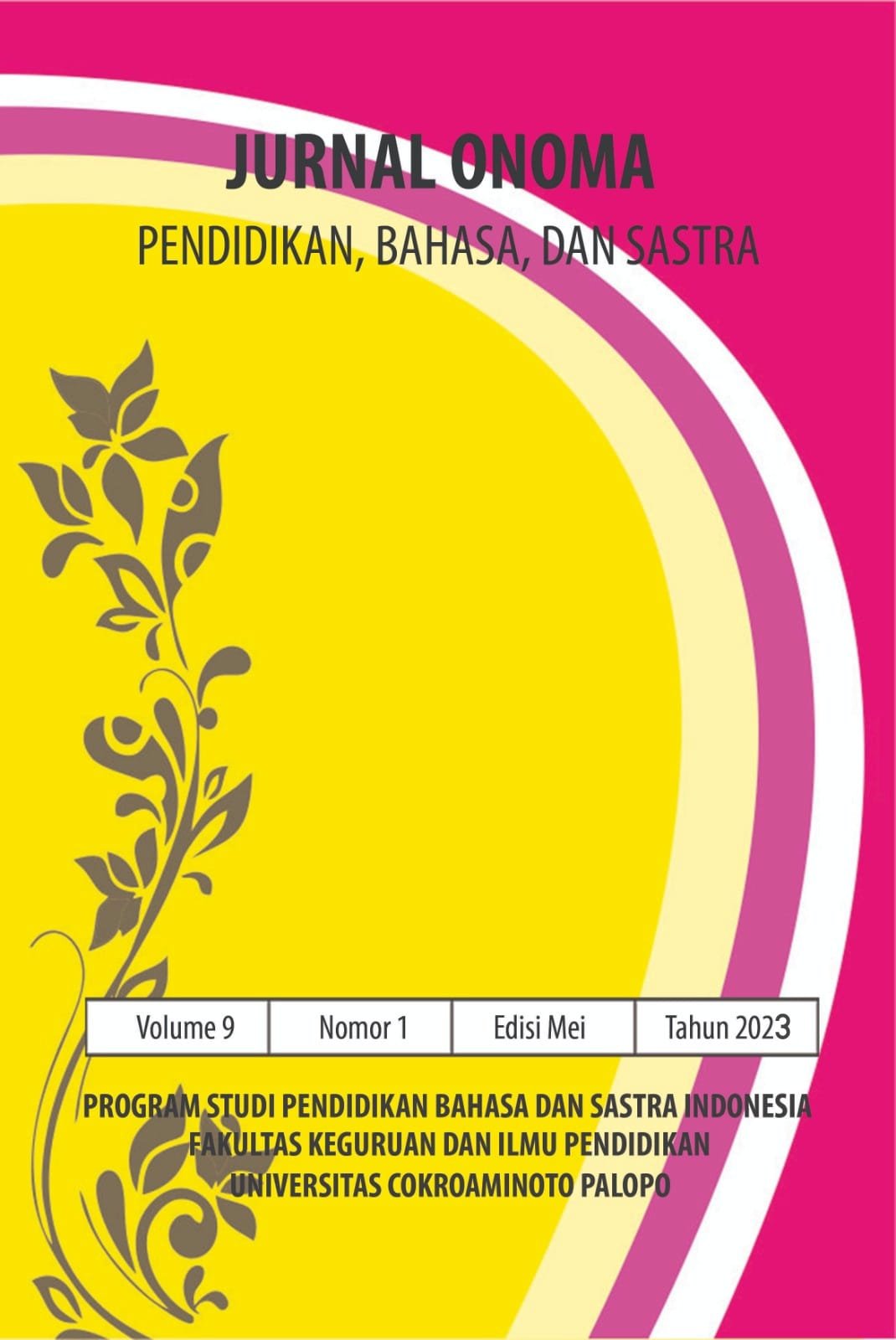Stories of Childhood and Adolescence: An Ethnographic Study of Indonesian-Chinese People
https://doi.org/10.30605/onoma.v9i1.2231
Keywords:
Ethnography, Indonesian-Chinese, Adolescence, ChildhoodAbstract
James P. Spradley (2006) argues that a language is a tool for constructing reality. The term of non-indigenous for Indonesian-Chinese people continuously exists, even though they are legally Indonesian. It cannot be denied that friction between Indonesian-Chinese and Indonesian non-Chinese still occurs, even though the integration is getting better. For this reason, researchers want to broaden the view of Chinese people's life from childhood, adolescence, and adulthood. In this study, the researchers used ethnographic methods to explore and telescope the story of growing up. According to James P. Spradley (2006: 5), ethnographic research aims to find the meanings of actions from events that happen to people we want to understand. A number of meanings are conveyed through language. This is a continuation of the previous study which have presented the results of interviews with three informants. This study will discuss the results of interviews with three other informants. Three informants were interviewed, namely three women named Mei (44 years old), Henny (43 years old) and Devi (22 years old) live in a fairly close location in the province of Banten. Mei and Devi, who are from the lower middle class, do not feel the difference between themselves and other children in Indonesia, even though they are both Indonesian-Chinese. Mei is more focused on issues of social and economic status that distinguish her from other children, while Devi is more focused on the departure of her father from the family. On the other hand, Henny as a child experienced restrictions on socializing from her parents with non-Chinese friends due to fears of being bullied. However, as she grew older, she became freer to choose her associates with non-Chinese friends, and she had quite a pleasant experience.
Downloads
References
Ariani, N. K & Atmaja, S.N.C.W (2021). ‘Cerita Tumbuh Dewasa di Indonesia: Sebuah Studi Etnografi terhadap Orang Indonesia-Tionghoa’, Jurnal Metahumaniora, 11: 63-74 DOI: https://doi.org/10.24198/metahumaniora.v11i1.32800
Coppel, C.A. (2003). ‘Kendala-kendala Sejarah dalam Penerimaan Etnis Cina di Indonesia yang Multikultural, Jurnal Antropologi Indonesia, 71: 13-22
Heryanto, A. (2015). Identitas dan Kenikmatan: Politik Budaya Layar Indonesia. Jakarta: Kepustakaan Populer Gramedia.
Dahana, A. (2010). ‘Thionghoa dan Masalah Politik di Indonesia’, dalam: Choirul Mahfud. Manifesto Politik Thionghoa di Indonesia. Yogyakarta: Pustaka Pelajar.
Spradley, J.P (2006). Metode Etnografi. Yogyakarta: Tiara Wacana Yogya.
Suparman, S., & Nurfisani, N. (2021). Kemampuan Membaca Nyaring melalui Model Pembelajaran Pair Check Siswa Kelas VIII SMP Negeri 10 Kota Palopo. Jurnal Sinestesia, 11(1), 41-51. DOI: https://doi.org/10.53696/27219283.63
Susanto, Irene (2017). ‘Penggambaran Budaya Etnis Tionghoa dalam Film “Ngenest”’, Jurnal E-Komunikasi, Program Studi Ilmu Komunikasi, Universitas Kristen Petra Surabaya, 5: 2-13 (Vol 5 no 1 2017)
Suyadnya, I. W. (2018). ‘Etnografi Digital sebagai Studi Budaya dan Jaringan Sosial Termediasi’ dalam Kholifah, S. & Suyadnya, I. W. (eds). Metode Penelitian Kualitatif: Berbagi Pengalaman dari Lapangan. Depok: Raja Grafindo Persada, hlm. 321-373
Sutopo, D.S. & Nurhadi, I. (2018). ‘Etnografi’, dalam Kholifah, S. & Suyadnya, I. W. (eds). Metode Penelitian Kualitatif: Berbagi Pengalaman dari Lapangan. Depok: Raja Grafindo Persada, hlm. 139-157
Suryadinata, L. (2003). ‘Kebijakan Negara Indonesia terhadap Etnik Tionghoa: dari Asimilasi ke Multikulturalisme?, Jurnal Antropologi Indonesia, 71: 1-12.
Suryadinata, Leo (2010). Etnis Thionghoa dan Nasionalisme Indonesia: Sebuah Bunga Rampai 1965-2008. Jakarta: Penerbit Buku Kompas.
Suparman, S., & Charmilasari, C. (2017). Analysis of Phase Structure Realization in Classroom Discourse: A Study of Systemic Functional Linguistics. Ethical Lingua: Journal of Language Teaching and Literature, 4(2), 120-126. DOI: https://doi.org/10.30605/ethicallingua.v4i2.624
Downloads
Published
How to Cite
License
In submitting the manuscript to the journal, the authors certify that:
- They are authorized by their co-authors to enter into these arrangements.
- The work described has not been formally published before, except in the form of an abstract or as part of a published lecture, review, thesis, or overlay journal.
- That it is not under consideration for publication elsewhere,
- That its publication has been approved by all the author(s) and by the responsible authorities – tacitly or explicitly – of the institutes where the work has been carried out.
- They secure the right to reproduce any material that has already been published or copyrighted elsewhere.
- They agree to the following license and copyright agreement.
License and Copyright Agreement
Authors who publish with Onoma Journal: Education, Languages??, and Literature agree to the following terms:
- Authors retain copyright and grant the journal right of first publication with the work simultaneously licensed under Creative Commons Attribution License (CC BY 4.0) that allows others to share the work with an acknowledgment of the work's authorship and initial publication in this journal.
- Authors are able to enter into separate, additional contractual arrangements for the non-exclusive distribution of the journal's published version of the work (e.g., post it to an institutional repository or publish it in a book), with an acknowledgment of its initial publication in this journal.
- Authors are permitted and encouraged to post their work online (e.g., in institutional repositories or on their website) prior to and during the submission process, as it can lead to productive exchanges, as well as earlier and greater citation of published work.

















